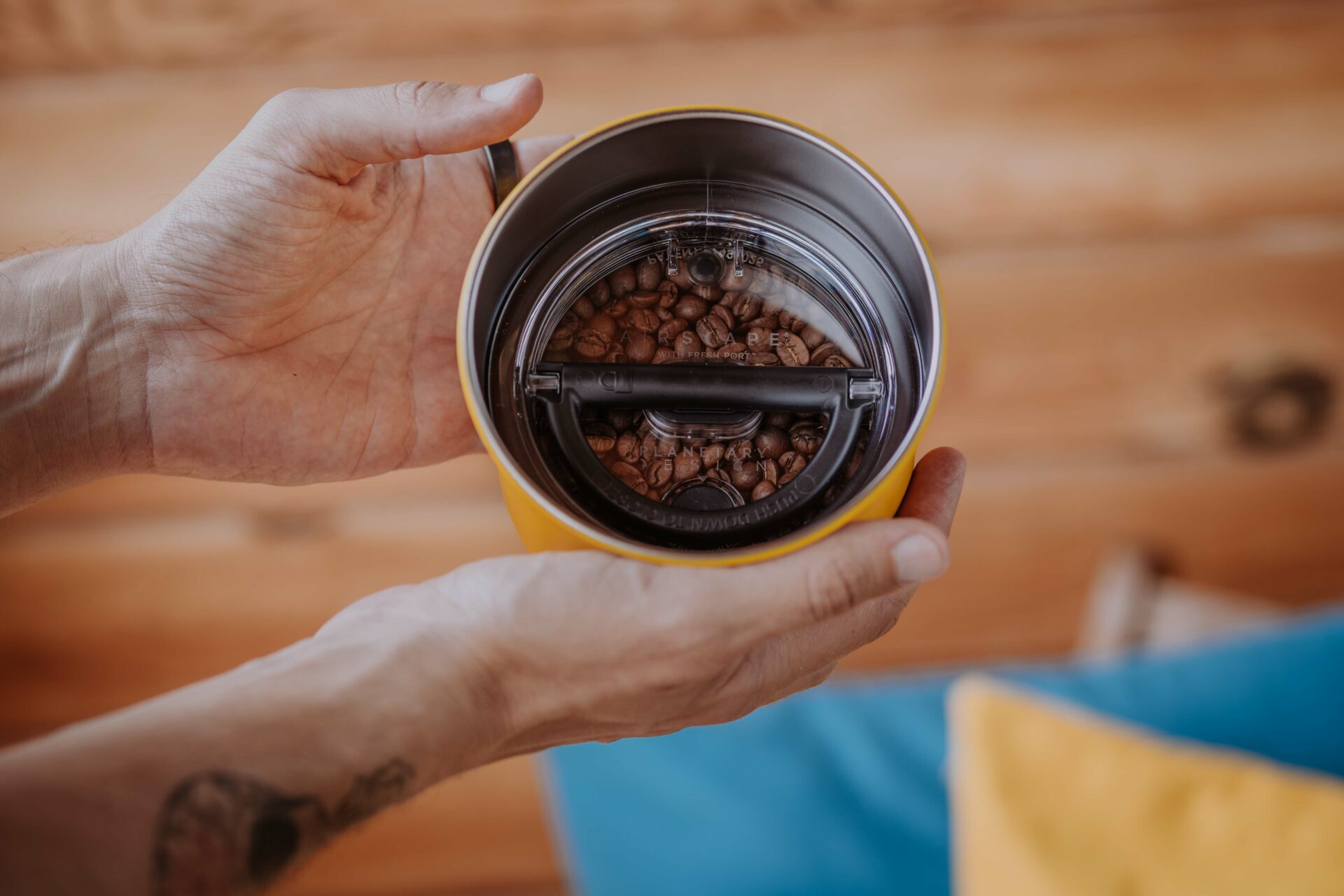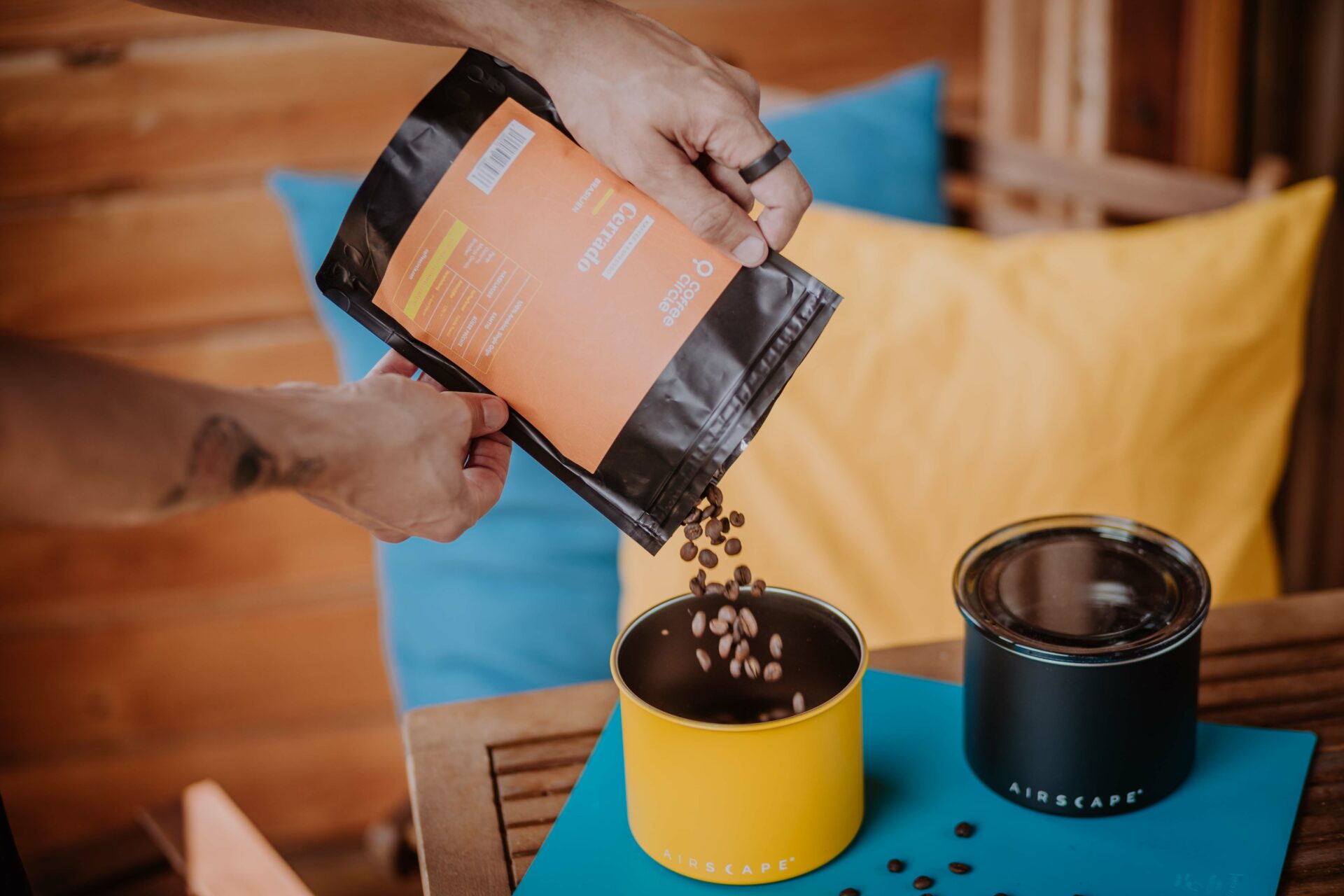
The Science of Coffee Freshness: How to Store Whole Coffee Beans and Ground Coffee
Few things are more important than optimizing your beans for freshness and flavor. Proper storage can help maximize the shelf life of your coffee and prevent a rapid decline in taste. By understanding ideal conditions for the storage of your coffee and using the right containers, you can keep your coffee fresh and tasting great for weeks or even months. Regardless of your coffee origin, keeping coffee beans in small batches, checking roasting dates, and using well-designed containers can help protect your investment in quality coffee.
Air, moisture, light, and heat are four environmental factors that speed up staling in coffee beans. Proper storage lets you retain those subtle tasting notes that make great coffee so enjoyable. The best storage methods try to restrict or regulate all four conditions. In this article, we’ll discuss each environmental stressor and explore the best airtight containers for coffee storage.

How Air, Moisture, Heat, and Light Influence Coffee Freshness
Proper coffee storage revolves around regulating exposure to four environmental elements that lead to staling: air, moisture, heat, and light. Oxygen accelerates the oxidation of aromatic compounds in roasted coffee beans. This causes beans to go flat and taste stale rapidly. Moisture from high humidity or condensation encourages mold growth and development of off-flavors. UV light degrades the oils in coffee beans leading to a massive loss of aromatics and flavor over time. Finally, heat speeds up the evaporation of volatile organic compounds that give coffee its subtle tastes and smells.
To preserve freshness, store beans and grounds in opaque, airtight containers. Ceramic, stainless steel, and glass all block light effectively to prevent light-induced damage. They tend to have tightly sealed lids that protect against oxygen and humidity. Fill containers as much as possible to minimize excess air pockets. For pre-ground coffee with increased surface area, use containers with one-way valve seals that allow carbon dioxide to vent while preventing oxygen from entering.
Proper temperature control is also critical. Store containers away from windows, appliances, and other heat sources. Cool, dry pantries or cupboards around 60-75°F are ideal. Refrigeration can help slow staling in pre-ground coffee but allow the container to reach room temp before opening to avoid condensation issues.
By keeping beans in a minimized oxygen environment, blocking light exposure, regulating moisture, and using proper temperatures, you can significantly extend the freshness window and enjoy optimally flavored coffee for 4-6 weeks after roasting.
Optimizing Storage by Roast Type and Bean Density
Not all coffees have the same storage needs. How you store coffee may vary based on the lightness or darkness of the roast and the natural oil content of the beans. Light roasts have the least stability, while dark oily roasts store exceptionally well. Medium roasts fall somewhere in between.
Lighter roasts have very low oil content on the bean surface. This makes them quicker to go stale when exposed to air and other elements. Keep light roast storage periods as short as possible – plan to use within 2 weeks after roasting or purchase small weekly batches. For medium roasts, optimize storage to retain quality for 4-6 weeks after roasting. Dark oily beans are the most shelf-stable and can last months before going stale if sealed from air and light.
Oilier beans like dark roasts also have increased density compared to lighter roasted beans. Their compact structure slows staling by naturally restricting oxygen penetration into the beans. If you love dark roast coffee, buying beans in bulk for longer-term storage can therefore be an option. Just portion beans into small airtight containers and keep the main supply in opaque, sealed packaging.
No matter the roast style, remember to minimize exposure to the four key enemies of coffee freshness: oxygen, moisture, heat, and light. Follow the storage best practices and your coffee will retain aromatic richness and flavor nuance for maximum enjoyment.
Recommended Storage Containers for Whole Coffee Beans and Ground Coffee

The optimal coffee storage container depends on whether you are storing whole bean or pre-ground coffee. Whole beans have less surface area exposed to oxygen and humidity. This makes them relatively shelf-stable in any airtight container kept in a cool, dark place. Glass and ceramic canisters are attractive options that also block UV light. Stainless steel containers are highly durable and offer good opacity. Dark-tinted plastic can also work well for whole bean storage and is very affordable.
For pre-ground coffee, the increased surface area makes it far more vulnerable to staling as it exposes way more surface area to oxygen. My advice is to ditch pre-ground alltogether and invest in a good manual coffee grinder. Grind right before brewing. If preground is a must, use containers with one-way valve seals that allow release of carbon dioxide while preventing oxygen entry. This could include bag-in-box systems, vacuum canisters, or valve-seal pouches and jars. The valve regulation creates a partial vacuum to deter oxidation. Also press out any excess air pockets before sealing the grounds in their container.
Now on to the cardinal sin of coffee storage: the bean hopper. Many use hoppers in coffee machines to store beans. But hoppers allow oxygen, light, and humidity fluctuations that rapidly stale beans. This likely contributes to consistency issues when dialing in brews. For best results, transfer just enough beans needed into the hopper before brewing.
So where’s coffee storage heaven? For whole beans, a quality airtight container with vacuum seal capabilities, like Airscape. They actively remove oxygen while protecting beans. No matter the container type, store coffee in small batches and finish within 2-4 weeks after opening for optimal freshness. Write the roast date on containers for whole coffee beans so you know when each batch was produced. For pre-ground coffee, write the date when first opened. Follow a first-in, first-out system when using multiple containers.
Keeping Beans Fresh With Airscape’s Innovative Coffee Canisters

I’m quite particular about how I brew, prepare and yes, store my coffee beans. So when the sleek Airscape Coffee Canisters caught my eye at the World of Coffee 2023 in Athens, I knew I had to put them to the test. Made by outdoor gear company Planetary Design, these canisters promise the perfect recipe for preserving coffee freshness. The key lies in their patented plunger system which presses out air to create a vacuum seal within the container. This vacuum effect far surpasses regular airtight canisters. I consistently get 3-4 weeks of lively, vibrant coffee thanks to the minimized air exposure. Beyond performance, Airscape’s stainless steel design looks gorgeous in my coffee corner. For my full, detailed take on Airscape’s vacuum seal technology and sleek aesthetic, check out my in-depth review article “Keeping Coffee Bean Freshness With Airscape Coffee Canisters” on my website. I break down airflow mechanics, design, and day-to-day use from a coffee purist’s perspective.
Frequently Asked Questions
How long does coffee last?
The shelf life of coffee depends on multiple factors, but with optimal storage, freshness can be extended to 4-6 weeks for whole beans. Pre-ground coffee is inherently less stable – surface area exposure to oxygen accelerates staling quickly. Flavor noticeably decreases after just a day and progressively fades after that. For peak taste, brew pre-ground coffee immediately or within minutes of grinding. Even waiting 15 minutes introduces a noticeable loss of aromatic quality.
Does Coffee Go Bad?
Coffee doesn’t necessarily “go bad” in the traditional sense of spoiling (the expiration date on the packaging will indicate until when consumption is safe). However, it does slowly degrade in quality and lose its delicious flavor over time. This staling process begins as soon as the coffee beans are roasted. An unopened bag of quality whole beans can last several months with proper storage in a cool, dark place. Once opened, aim to use up the beans within six weeks. Pre-ground coffee must be consumed within 2 weeks for optimal freshness.
What is the best way to store coffee beans?
For maintaining coffee freshness, store whole beans in an airtight container, ideally one that actively removes oxygen, in a cool and dark place. Airscape canisters are one of the best storage solutions. Their patented valve system actively removes oxygen from the container, creating an ideal environment for maintaining bean quality.
Can I Keep Coffee in the Fridge?
This common question has a simple answer – no. While refrigeration may seem logical for preserving freshness, several factors make fridge storage ineffective or even detrimental for coffee beans and grounds. The main culprit is moisture – opening and closing the fridge introduces humidity into any container stored inside. These fluctuations degrade beans rapidly. Fridges also harbor mold and smells that can transfer to absorbent coffee. Additionally, standard fridge temperatures don’t optimally slow coffee staling. Studies show greatest stability around room temperature. Light exposure through clear containers or each opening also accelerates bean degradation.
Can I Freeze My Coffee Beans?
Freezing beans can effectively pause the aging process for extended storage. But the process requires meticulous technique to avoid ruining your precious coffee. First, beans must be in an airtight, moisture-proof container or bag before freezing. No air pockets can remain or ice crystals will irreparably damage beans. Allow beans to fully reach room temperature before opening the container after thawing. Ideally, freeze beans in smaller batches to minimize repeats of this freeze-thaw cycle. Refreezing beans risks extreme drying and cracking. Even done properly, freezing mutes certain aromatic compounds in beans over time. For short to medium term storage, freezing works. But for everyday pantry storage, stick to opaque airtight canisters at cool room temperature. The hassle of freezing simply isn’t worthwhile for beans you’ll consume quickly. Follow best practices and your beans will stay cup-ready for weeks without freezing.
